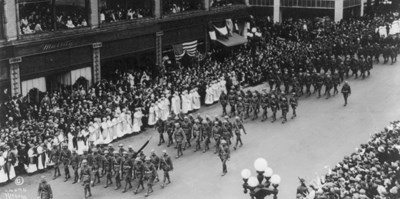
Library of Congress LC-USZ62-78423
"Abstract words such as glory, honor, courage, or hallow were obscene beside the concrete names of villages, the numbers of roads, the names of rivers, the numbers of regiments and the dates."
Ernest Hemingway
World War I cost 117,000 American lives. The horrors of a war fought with poisonous gas, artillery, machine guns, airplanes, and tanks left scars, both seen and unseen.
Beyond the casualties of war, how did the war change things at home?
Last updated: May 9, 2017
